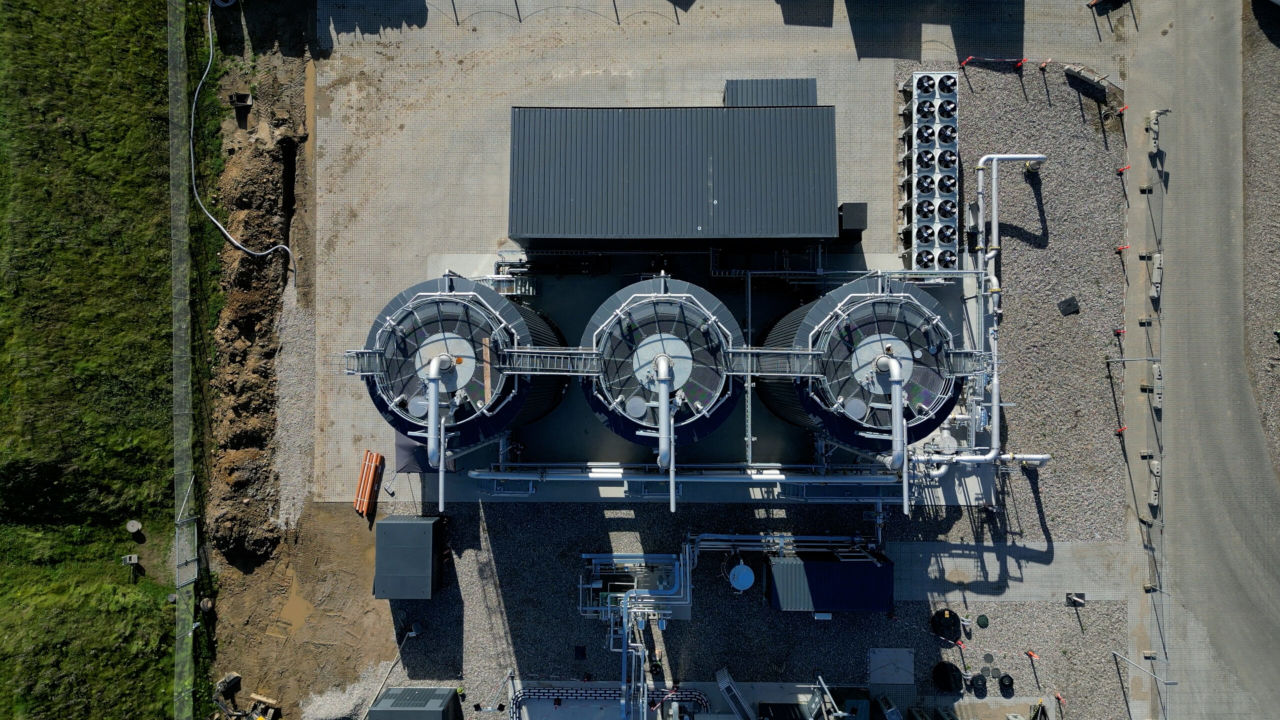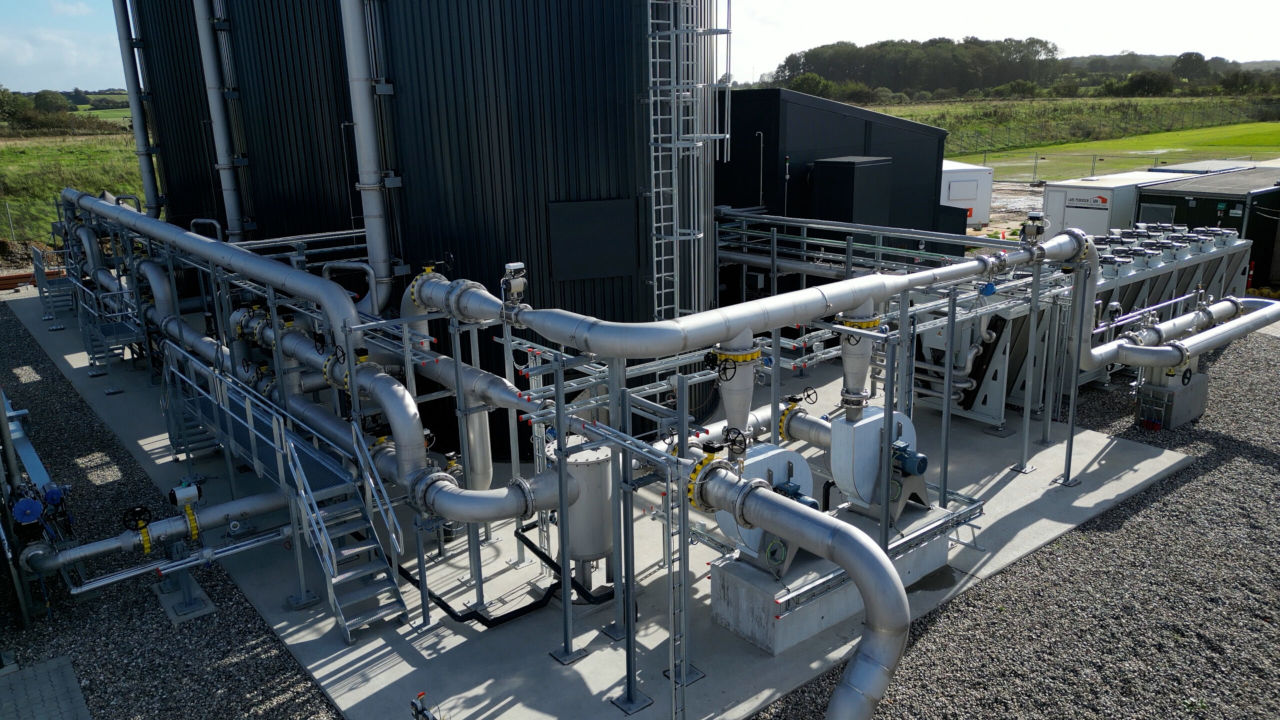E-methane, short for electro-methane or synthetic methane, is a renewable gas produced by capturing carbon dioxide (CO2) and combining it with green hydrogen.
Like biomethane, e-methane consists primarily of methane. But the two fuels are produced differently.
Biomethane is produced by capturing and filtering methane gas from organic waste, while e-methane is generated by capturing carbon dioxide and combining it with green hydrogen to produce a fuel that’s nearly chemically identical to natural gas.
Turning renewable electricity into renewable natural gas is called Power-To-Gas. Using renewable energy to produce hydrogen and generate e-methane enables long-term energy storage, which could be used as a type of synthetic battery.
Storing renewable electricity is a significant challenge due to the limitations on existing storage capacity, the cost and environmental impacts associated with building new storage and the infrastructure investments required to connect them to the grid. Unlike electricity, green gas (both e-methane and biomethane) can be stored for long periods and transported using existing infrastructure.
Another challenge with wind and solar energy is that they are intermittent power sources. Generation fluctuates based on weather conditions and the time of day, making it difficult to consistently match power supply with demand. E-methane and biomethane, on the other hand, provide a steady supply of renewable energy.
Because e-methane is nearly identical to fossil natural gas and biomethane, it can be injected directly into the gas grid and used for the same applications as fossil natural gas. Thus, using e-methane and biomethane as fuel reduces or eliminates the need for costly expenditures on new equipment and time-consuming overhauls or retrofitting. That makes it an excellent solution for decarbonising hard-to-electrify sectors like heavy transport and maritime shipping.

Biological methanation vs. catalytic methanation
Commercial-scale biological methanation is the driving force behind the decarbonisation potential of e-methane—as it’s much more efficient and sustainable than catalytic methanation. Let’s explore and compare these two technologies.
Catalytic methanation is a chemical process that uses metal-based catalysts to convert carbon dioxide and hydrogen into methane. It operates under high heat and pressure and is commonly used to produce synthetic fuels for industrial applications.
Because catalytic methanation requires such high temperatures and pressure to achieve efficient conversion rates, it’s an energy-intensive process.
Also, the metal-based catalysts used in the process—including nickel, ruthenium, cobalt, and iron—require mining and refining to produce. This impacts ecosystems, releases greenhouse gases, and creates toxic waste, all of which impacts the environment.
Biological methanation is a biochemical process that uses bacteria to create a chemical reaction that combines carbon and green hydrogen molecules to generate e-methane.
This process also occurs naturally in wetlands and the digestive systems of ruminant animals such as cows.
Biological methanation is significantly less energy-intensive than catalytic processes and offers numerous other advantages:
- Biological methanation captures biogenic CO2 and converts it to e-methane, making it a carbon-neutral fuel.
- It operates under ambient temperature and pressure using microorganisms that can be optimised for specific substrates.
- Input sources are flexible, including CO2, carbon monoxide and hydrogen from diverse sources, making it possible to integrate with renewable energy systems and waste streams.
- Biological methanation can achieve high methane yields with lower energy inputs than catalytic processes and no waste generation, especially when coupled with anaerobic digestion.
- The technology can be implemented at various scales, from small decentralised units to extensive centralised facilities—offering cost savings and scalability advantages.

Pioneering e-methane technology
One challenge with biological methanation is that very few companies have been able to make it viable at a commercial scale. One company that has succeeded in this challenge is CycleØ’s subsidiary, Biogasclean.
Biogasclean’s biological methanation enables biogas plants to increase their green gas production by up to 78% with the same amount of organic waste input.
The process builds upon the company’s leading desulphurisation technology but employs different bacteria and operating conditions to combine carbon dioxide and hydrogen and produce e-methane.
This technology can be integrated into any location with a carbon dioxide source. However, due to the steady flow of CO2 and infrastructure for methane production and grid injection or liquefaction, it’s ideally suited to biogas plants.
CycleØ Your Partner in Renewable Gas Solutions
At CycleØ, we develop, own and operate biogas plants across Europe, working towards our mission to turn waste into renewable natural gas. We are a biogas plant developer that understands the intricacies of anaerobic digestion.
Contact us today to explore how we can partner to turn your waste into a valuable renewable energy resource and contribute to a greener future.